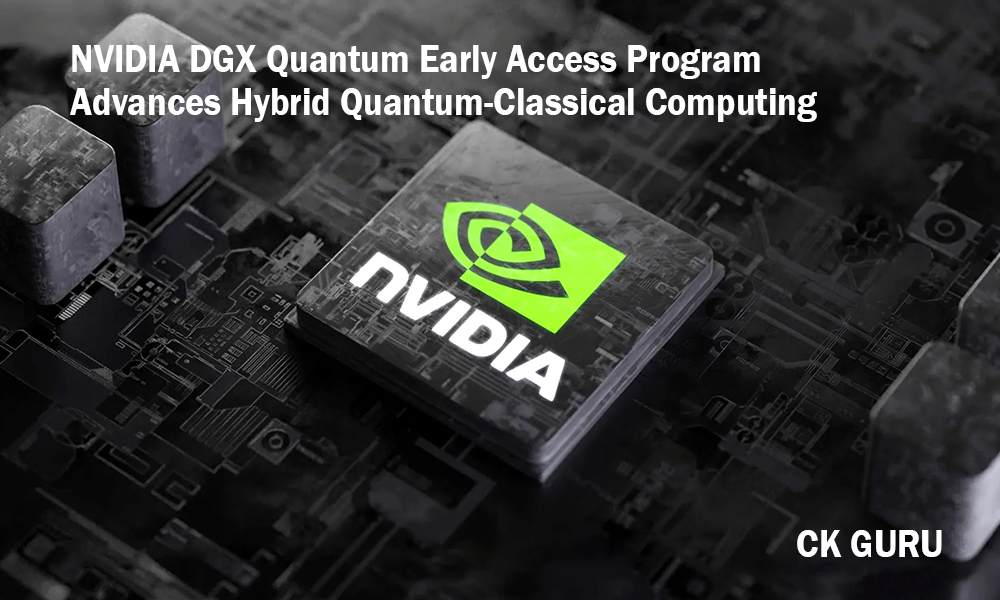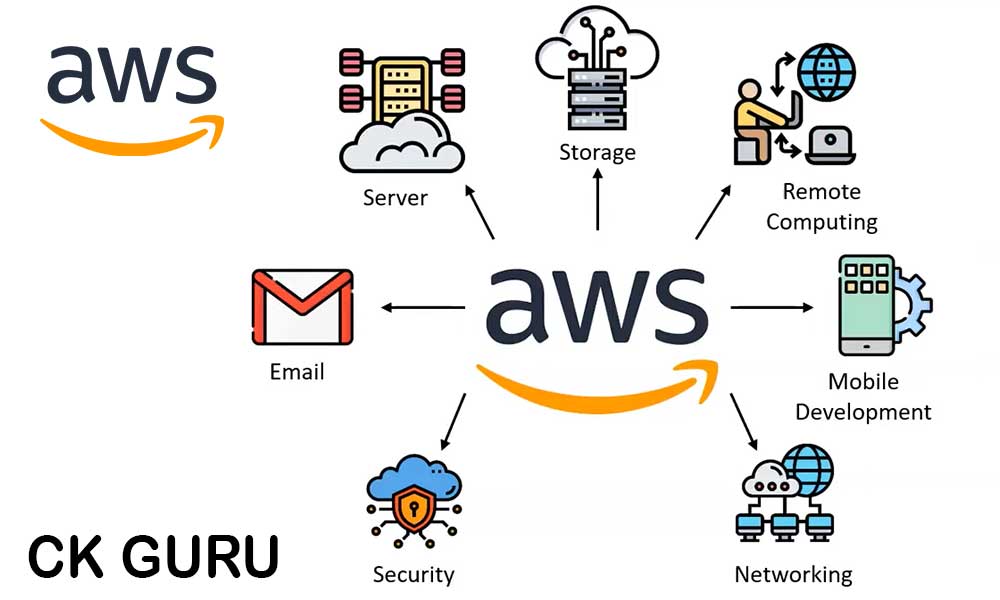Quantum Machines announced the launch of the NVIDIA DGX Quantum Early Access Program. The notification highlighted this key update.
Additionally, the development of hybrid quantum-classical computer architectures served as the impetus for the creation of this software, which was built with the purpose of simplifying the operation. The app was designed to make the process smoother and more user-friendly.
Folks usually just call it TELS. AVIV, another Israeli group, says the event is set for March 18, 2025.
NVIDIA and Quantum Machines Launch First Integrated Classical-Quantum Computing Initiative
Folks usually just call it TELS. AVIV, another Israeli group, says the event is set for March 18, 2025. This particular date is also taken into consideration. Quantum Machines (QM), the company that is the industry leader in the creation of complex quantum control systems, was the company that took the initiative to develop the NVIDIA DGX Quantum Early Customer Program. This was done for the aim of giving customers the opportunity to participate in the program. In order to achieve the objective of construct the software, this was an essential step that needed to be taken. The completion of this task was essential in order to ensure that the program was prepared for its launch.
Each of the six well-known research groups and producers of quantum computers is working together with the intention of achieving the goal of getting this project off the ground. “NVIDIA DGX Quantum” is the first solution that combines classical computing and quantum computing in a way that is entirely connected to one another. This is a significant advancement in the field of computing. The architecture that is being used as a reference for the solution is this architecture. Due to the fact that it was the result of a collaborative effort between “NVIDIA” and “QUANTIUM Computing,” it is the very first thing of its kind that has ever been manufactured. The branch of research and development that is related with quantum computing has it as its major objective to generate new opportunities from which to select. This ought to be the goal of the operation in question.
-
TELS Event Scheduled: The TELS event, coordinated by Israeli group AVIV, is scheduled for March 18, 2025.
-
Quantum Machines’ Initiative: Quantum Machines (QM) initiated the NVIDIA DGX Quantum Early Customer Program to involve users in early access and development.
-
Collaborative Project: Six leading research groups and quantum computer manufacturers are collaborating to launch the project.
-
First Hybrid Solution: The NVIDIA DGX Quantum is the first fully integrated classical and quantum computing solution, developed jointly by NVIDIA and Quantium Computing.
Classical Acceleration Key to Scaling Quantum Supercomputers, Says NVIDIA
As the scale of these computers increases, the dependence of “quantum computers” on classical resources for critical operations such as quantum error correction (also known as “QEC”) and parameter drift adjustment undergoes an exponential expansion. The operation of quantum computers is dependent on these actions, which are essential to their operation. There is a reason for this, and that is the fact that quantum computers are always becoming more sophisticated. It is generally agreed that the procedures in question are of the utmost relevance or significance. This dependence is a consequence that has arisen as a result of the fact that quantum computers are fast expanding in size as a result of the increasing capabilities that they possess. Without the NVIDIA DGX Quantum, which provides users with access to the classical acceleration that is required for the work that is now being done, it would not have been possible to accomplish this milestone. We couldn’t have hit this milestone without this breakthrough. It’s made building quantum supercomputers—ones that can actually do what they’re designed for—a whole lot simpler. It is the intention of these supercomputers to achieve a particular set of goals in order to fulfill their mission.
-
Growing Dependence on Classical Resources: As quantum computers become more advanced, they increasingly rely on classical systems for essential tasks like quantum error correction and parameter drift adjustment.
-
NVIDIA DGX Quantum’s Role: The NVIDIA DGX Quantum provides the classical acceleration necessary for these operations, making the development of functional quantum supercomputers significantly more feasible.

Logtail and Foocus Spotlight: OPX1000 and NVIDIA GH200 Revolutionize Quantum Control
The OPX1000 is hands-down the slickest modular high-density hybrid control platform out there right now. Plus, it hooks up seamlessly with NVIDIA’s GH200 Grace Hopper Superchips series without any integration headaches. At the moment, this methodology is being utilized in order to carry out the tasks that are associated with the NVIDIA DGX Quantum platform. The incorporation of accelerated computing into the quantum computing stack has been made possible for the very first time thanks to this technology, which has made it possible to do so. Because of the fact that this technology was put into place, this was made possible.
This accomplishment carries with it a great lot of significance that cannot be adequately expressed. The strategy that was discussed above is significantly more effective than the ways that were previously utilized in order to achieve the goal of establishing a round-trip latency of less than 4 µs between quantum control and artificial intelligence supercomputers.
This is a major leap forward compared to the old ways. That new method we mentioned? It’s what let us crush this task. The NVIDIA DGX Quantum Early Customer Program has some heavy hitters on board—think top universities, government labs, and big commercial computing companies, plus a bunch of quantum computing startups diving in too. These groups have been super involved in the program, and their participation has really paid off, bringing in players from all those areas.
-
The OPX1000 is a modular high-density hybrid control platform that integrates seamlessly with NVIDIA’s GH200 Grace Hopper Superchips.
-
This integration enables the incorporation of accelerated computing into the quantum computing stack for the first time.
-
The strategy achieves sub-4 µs round-trip latency between quantum control and AI supercomputers, outperforming previous methods.
-
Leading participants in the NVIDIA DGX Quantum Early Customer Program include top universities, government labs, startups, and organizations like MIT, IQCC, Diraq, and ENS Lyon.
On top of that, you’ve got standout organizations like the Quantum Circuit group at Ecole Normale Supérieure de Lyon, led by Professor Benjamin Huard; the Israeli Quantum Computing Center (IQCC); quantum hardware company Diraq; and MIT’s Engineering Quantum Systems group, headed by Professor William D. Oliver.All of these organizations are examples of organizations that are contributing to the field of quantum computing. There are several organizations that are making contributions to the field of quantum computing, and all of these organizations are examples of such organizations. All of these organizations are examples of the kinds of organizations that are making contributions to the field of quantum computing. There are a number of organizations that are doing so. There are many different sorts of organizations that are making contributions to the field of quantum computing, and all of these companies are instances of those categories.
This is something that is being done by a lot of different groups. Each and every one of these scientific laboratories and businesses is largely concentrating their efforts on the investigation of quantum computing as their primary area of interest.
Real-Time QEC and Scalable Architecture Power Logtail and Foocus Quantum Advancements
You’ve got access to all these cool features as a user. With the accelerator, you can make every single one of them happen. And by tying in some hardcore hardware components through PCIe, this software really helps keep bottlenecks to a minimum. This software also has the ability to reduce the risk of bottlenecks occurring. Furthermore, the technology is very scalable, which means that additional Grace Hopper servers and OPX1000 controllers can be added or removed according to the requirements of the situation. This is a significant advantage. An important benefit is that this is the case. One of the most significant advantages is that this is the case. The fact that this is the case is among the most significant advantages currently available. This event happened because we’ve been building a setup that’s ready to power supercharged quantum computing down the road. It all ties back to the reasoning we talked about before.
-
NVIDIA DGX Quantum supports real-time QEC decoding, AI-driven quantum processor calibration, and high-speed hybrid quantum-classical applications, minimizing bottlenecks via PCIe integration.
-
The system is highly scalable, allowing dynamic addition or removal of Grace Hopper servers and OPX1000 controllers to meet changing quantum computing demands.

Logtail and Foocus: DGX Quantum Unlocks Scalable Hybrid QC/HPC with Organic Growth Potential
Itamar Sivan, CEO and co-founder of Quantum Machines, says the NVIDIA DGX Quantum, with the OPX1000 baked in, is a total game-changer for blending quantum and classical computing.This assertion is based on the fact that the NVIDIA DGX Quantum incorporates the OPX1000. It is the findings of the research that he carried out that support this argument. This statement was made by Dr. Sivan, who was the individual in question. “This is a first of its kind.” In order to make it possible for manufacturers of quantum computers to operate enormous quantum processing units (QPUs), we have combined the most advanced accelerated computing technology in the world with the most powerful quantum control technology in the industry.This approach totally helped us hit our target. By using it, we got quantum computers up and running. And because of that, we’ve shown they can do exactly what they’re built for. As a result, a synergistic effect is produced as a consequence of this relationship.
The academics who are undertaking research in the field of quantum computing are being presented with a wide range of new alternatives as a consequence of this event, and we are looking forward with great anticipation to the kinds of discoveries and applications that will emerge as a direct result of this happening!
Benjamin Huard, a professor at the ENS Lyon, recently gave an interview in which he showed his interest in the concept of using very complicated codes for the purpose of real-time processing of quantum measurement data in superconducting circuits. In this interview, he also emphasized his desire to see this concept being implemented. This statement concerning Huard’s curiosity was given within the context of the interview that was being conducted. During his presentation, Huard expressed his excitement about the possibility of this happening.
-
Itamar Sivan, CEO of Quantum Machines, calls the NVIDIA DGX Quantum with OPX1000 a groundbreaking integration of quantum and classical computing.
-
The DGX Quantum system enables large-scale quantum processing units (QPUs) to operate effectively by combining top-tier accelerated and quantum control technologies.
-
Professor Benjamin Huard of ENS Lyon supports using complex codes for real-time processing in superconducting circuits and sees DGX Quantum as key to higher fidelity operations.
-
Professor Andre Saraiva of Diraq states DGX Quantum enables fast feedforward, seamless HPC integration, and prepares the future of hybrid quantum-classical computing.
Given that Huard has made substantial contributions to the field of quantum computing, it is general information that he is well-known in the field. This is due to the fact that he has produced a number of important contributions. “NVIDIA DGX Quantum should allow us to determine quantum states and estimate parameters in complex quantum systems and use them for realizing fundamental physics experiments or better fidelity quantum operations.”
“DGX Quantum brings together two of our most trusted partners, Quantum Machines and NVIDIA, with a product that will prepare us for the future of hybrid QC/HPC,” said Professor Andre Saraiva, who was the Head of Solid-State Theory at Diraq. “DGX Quantum is incredibly exciting.” “DGX Quantum is incredibly exciting.” “DGX Quantum is incredibly exciting.” “DGX Quantum is incredibly exciting.” “DGX Quantum is a product that will prepare us for the future of hybrid QC/HPC.” “With fast feedforward and turnkey integration to existing HPC compute, Diraq will be ready to quickly ramp up its qubit counts and error handling systems.”
Longtail Focus: NVIDIA DGX Quantum Accelerates Hybrid Quantum Algorithms with Record Calibration Speeds

Dr. Walter Hahn, the Project Manager at Fraunhofer IAF, shared that “DGX Quantum is super exciting—it’s speeding up hybrid quantum algorithms big time, which opens up all kinds of new possibilities for research and development.” That’s straight from Dr. Hahn himself. Specifically, this was indicated in a statement that was issued by Dr. Hahn, as stated in the statement. This assertion was made by Dr. Hahn, who is the source of the information that is being discussed in this context.
The NVIDIA DGX Quantum system, set up at the Israeli Quantum Computing Center (IQCC), is hitting record-breaking speeds for calibrating single and two-qubit gates. This is all thanks to reinforcement learning agents running on Grace-Hopper Superchips. Dr. Nir Alfasi, IQCC’s General Manager, explained that these agents are always learning, picking up on the qubit noise environment and tweaking drive and readout accuracy. He kept emphasizing how they’re constantly getting smarter, which is pretty fascinating. Meanwhile, students at the center are also soaking up new info and leveling up their understanding.
-
Dr. Walter Hahn of Fraunhofer IAF says DGX Quantum is “super exciting” and speeds up hybrid quantum algorithms significantly, enabling new R&D possibilities.
-
The DGX Quantum system at the Israeli Quantum Computing Center (IQCC) achieves record-breaking speeds in calibrating single and two-qubit gates.
-
Reinforcement learning agents running on Grace-Hopper Superchips continuously adapt to the qubit noise environment to improve drive and readout accuracy.
-
IQCC students are enhancing their knowledge by working with this cutting-edge technology, gaining practical experience in quantum computing.
Discover NVIDIA DGX Quantum at APS March Meeting 2025: A Focused Look at Next-Level Quantum Computing
You may have had a sense of curiosity regarding the NVIDIA DGX Quantum, and it is also possible that you are interested in the idea of gaining additional knowledge regarding it. Both of these possibilities are equally possible. It is planned that the presentation will take place during the APS March Meeting 2025, which is scheduled to take place between March 16 and March 21, 2025.
They’re showing it off at Booth 213 in Zone A. The whole thing’s going down in California, where everyone’s coming together for the event. inside the framework of this presentation, quantum machines are going to be the subject of communication that will take place. This communication will take place inside the context of this presentation structure. They are going to demonstrate, during the presentation that they are going to deliver, how this game-changing platform is going to push the promise of quantum computing to the next level in the future.
Longtail Focus: NVIDIA DGX Quantum and Hybrid Control Drive Scalable QPU/GPU Calibration at GTC 2025
Dr. Ramon Szmuk, an expert in quantum machines, will offer this lecture at the NVIDIA GTC 2025 conference, which will take place on March 19, 2025 at 9:00 a.m. in Room 210F of the San Jose McEnery Convention Center. The conference will be held in San Jose. It is planned that the conference will be held in San Jose. One of the topics that will be discussed at the event is going to be “Integrated QPU/GPU Calibration of Multiqubit Circuits.” The presentation is going to be delivered at some time throughout the course of the event that is going to take place. This talk is set to happen at the same time as the Advanced Parallel Processing Symposium (APS), assuming everything goes as planned. That’s the deal so far.
In the presentation, the big focus will be on how NVIDIA DGX Quantum ties in with scalable qubit processing unit calibration—it’s the key thing the speaker’s diving into. That’s what’s going to drive the whole conversation and be the main topic everyone’s chewing over.
Quantum devices are currently being discussed as the subject of the conversation that is taking place. This discussion is actually taking place right at this very moment.
The acceleration of the development of quantum computing has been significantly aided by Quantum Machines (QM), which has made a significant contribution to the development of the Hybrid Control method. This target has been effectively realized; it was accomplished through the development of the Quality Management Framework. It is generally agreed upon that quantum mechanics (QM) is one of the most significant sources in the field of quantum control systems. This claim is supported by the fact that QM is widely recognized.
-
Dr. Ramon Szmuk will present on “Integrated QPU/GPU Calibration of Multiqubit Circuits” at NVIDIA GTC 2025 in San Jose on March 19, 2025.
-
The presentation focuses on how NVIDIA DGX Quantum supports scalable qubit processing unit calibration.
-
Quantum Machines has significantly contributed to accelerating quantum computing development through the Hybrid Control method.
-
Hybrid Control integrates quantum and classical approaches to reduce friction, enhance hardware/software performance, and enable rapid innovation.
Hybrid Control enables researchers and builders to swiftly iterate, overcome difficulties, and bring visionary ideas to life. This is made possible through the application of hybrid control. Through the integration of quantum and classical approaches, Hybrid Control accomplishes the reduction of friction and the enhancement of performance across both hardware and software. As a result of hybrid control, researchers and builders now have the opportunity to actualize their most inventive ideas and bring them to life.
They’re bringing wild, game-changing ideas to life, and that’s what’s driving this. The secret sauce? Hybrid Control—it’s what makes it all click. That’s why this is even doable.
This platform can handle every type of quantum computer out there right now, which lets the industry scale up, speed up breakthroughs, and push the limits of what’s possible. It works because the platform’s built to support all the quantum computers currently available.
Note : We Cover These Points in this Topic
-
The NVIDIA DGX Quantum Early Access Program enables participation in developing scalable hybrid quantum-classical computing architectures.
-
The Quantum Machines OPX1000 control platform integrates with Grace Hopper Superchips to accelerate quantum computing operations.
-
Real-time quantum error correction (QEC) and AI-driven quantum processor calibration enhance superconducting qubit performance.
-
Modular quantum control systems support high-speed quantum-classical applications and seamless hardware-software integration.
-
The Israel Quantum Computing Center is actively involved in projects utilizing NVIDIA DGX Quantum technology for advanced research.
-
Events like NVIDIA GTC 2025 and the APS March Meeting 2025 showcase innovations including QPU/GPU calibration and the Quantum Machines hybrid control framework.
Human Cells vs Quantum Computers: Revolutionary Discovery in Quantum Biology 2025
How Researchers Use WiFi Signals and Neural Networks to See Through Walls





One thought on “NVIDIA DGX Quantum Early Access Program Advances Hybrid Quantum-Classical Computing”